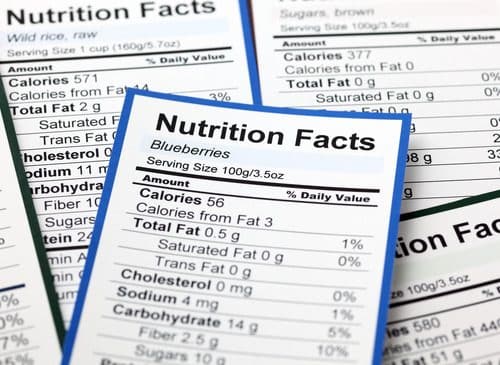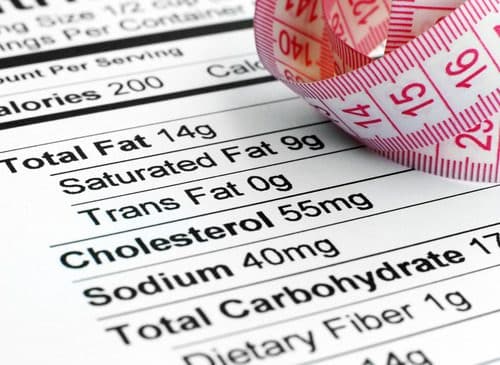A Deep Dive into the Newly Approved Dietary Fibers

Fiber has recently received increased recognition as a vital component of a healthy diet, and with good reason.
“Fiber has many beneficial effects including lowering cholesterol, reducing blood sugar levels and decreasing risk of heart disease,” says Dr. Keri Peterson, an internal medicine specialist who focuses on preventing, diagnosing, and treating adult health concerns. “Fiber also aids in weight management by promoting regular bowel movements and providing a feeling a fullness that reduces our appetite.”
Approval as a dietary fiber requires compliance with the U.S. Food and Drug Administration (FDA)’s evidence-based definition. This states that dietary fiber declared on the updated Nutrition Facts label can include “certain naturally-occurring fibers that are ‘intrinsic and intact’ in plants, as well as seven other added isolated or synthetic fibers that are well-recognized by the scientific community as having physiological benefits.”
In June 2018, the FDA announced that an additional eight non-digestible carbohydrates (NDCs) now meet its definition of the term. A ninth was added to the list in March 2019. These declarations were based on careful review of the scientific evidence supporting the beneficial physiological effects of these ingredients. This evidence was supplied and demonstrated by manufacturers, public comments, and the FDA’s independent evaluation of available literature.
The new guidance, The Declaration of Certain Isolated or Synthetic Non-Digestible Carbohydrates as Dietary Fiber on Nutrition and Supplement Facts Labels, allows these fibers to be counted in the calculation of total fiber per serving for declaration on the Nutrition Fact Label, as well as the Supplement Facts label. Non-digestible carbohydrates that do not meet the regulatory definition of “dietary fiber” at this time can still be used in foods and declared as part of the amount of total carbohydrate on the package.
The currently approved dietary fibers include:
Mixed plant cell wall fibers
Definition
Ingredients containing two or more of the following plant cell wall fibers in varying proportions: cellulose; pectin; lignin; beta-glucan; and arabinoxylan.
Benefits
These fibers may include variable amounts of vitamins, minerals, and macronutrients, beneficial to heart health and blood glucose and insulin levels depending on the methods that may be used for isolating and extracting the fiber.
Source
Examples include apple fiber, bamboo fiber, barley fiber, carrot fiber, citrus fiber, cocoa fiber, and corn fiber.
Arabinoxylan
Definition
A predominant non-digestible carbohydrate found in the alkali soluble fraction of psyllium husk.
Benefits
May help lower blood glucose/insulin levels.
Source
A major component of the cell walls of cereal grains.
Alginate
Definition
A soluble fiber composed of β-1,4-D-mannuronic acid and α-1,4-L-guluronic acid organized in homopolymeric compounds of either mannuronate or guluronate, or as heteropolymeric compounds, expressed as mannuronic acid to guluronic acid ratio.
Benefits
Beneficial physiological effect on post-prandial glucose levels.
Source
Alginate is extracted from brown seaweeds as the calcium, magnesium, and sodium salts of alginic acid of various species, (e.g., Ascophyllum, Durvillaea, Ecklonia, Laminaria, Lessonia, Macrocystis and Sargassum)
Products
Often used toimprove the texture of salad dressings, yogurts, and jellies.
Inulin and inulin-type fructans
Definition
A naturally occurring polysaccharide that belongs to a class of carbohydrates known as fructans. Common names used to identify inulin and inulin-type fructans as an ingredient include inulin, chicory root extract, chicory root, chicory root fiber, inulin from chicory, chicory vegetable fiber, fructooligosaccharide, and oligofructose.
Benefits
Several inulin-type fructans demonstrated a beneficial physiological effect on absorption of calcium and bone mineral density.
Source
Extracted from numerous plant products, many of which typically are not consumed as part of the U.S. diet (e.g., chicory root, agave, jicama, Yacon root and Jerusalem artichoke).
Products
Used as a bulking agent/fat replacement in foods, such as candy bars, yogurt, cheese and ice cream.
High amylose starch (resistant starch 2)
Definition
Uncooked native starch that is comprised primarily of 1,4 glycosidic links that are inaccessible to enzymes.
Benefits
Reduction in reducing post-meal insulin levels.
Source
High amylose starch can be found in products such as raw green bananas, raw potatoes, and uncooked high amylose maize/corn and potato starch.
Products
It is found as a supplement and in products such as legumes, oats, cornmeal, rice and potatoes.
Galactooligosaccharide (GOS)
Definition
Oligosaccharides of varying lengths (typically between 2-8 saccharide units) including various linkages of galactose (e.g., β-(1-4), β-(1-6) galactose) and a terminal glucose. GOS is a prebiotic.
Benefits
May increase the absorption of calcium.
Source
GOS is produced by the enzymatic treatment of lactose. It can be found naturally in various foods, including asparagus, garlic, tomato, and banana.
Products
Used to improve the texture of foods and as a bulking agent. Foods that have high GOS levels are red kidney beans, chickpeas, baked beans, split peas, cashews, pistachios, and hummus dip. Drinks that have soymilk made out of soybeans.
Polydextrose
Definition
Synthetic and partially metabolizable water-soluble polymer primarily consists of D-glucose, and is partially-fermented in the colon.
Benefits
May aid in the reduction of caloric intake.
Source
A synthetic polymer of glucose
Products
Polydextrose can be added to foods as in non-sweat baked goods, dairy products, ice creams, breakfast cereals, nutritional beverages, fruit spreads, fillings, chicken nuggets, burgers, surimi, chewing gums, and infant formulas as a bulking agent, formulation aid, humectant, and texturizer.
Resistant maltodextrin/dextrin
Definition
A glucose oligosaccharide. Common names used to identify resistant maltodextrin as an ingredient include soluble corn fiber, resistant dextrin, resistant wheat dextrin, soluble wheat fiber, and wheat dextrin.
Benefits
May help strengthen bones, and increase calcium absorption and body retention. This ingredient also has a low glycemic response, and can therefore be used in foods intended to elicit a lower glucose and insulin response after meals.
Products
Used for fiber enrichment of a variety of foods cereals, baked goods, candy, dairy products, frozen foods, carbonated beverages, and flavored water. It is often used for sugar and calorie reduction, and can be used in hot beverages, baking, or cooking.
Cross linked phosphorylated RS4
Definition
Resistant (wheat) starch
Benefits
May help reduce post-prandial insulin levels
Source
Can be produced from any starch, including wheat, normal corn, high-amylose corn, potato, tapioca, oat, and banana that is treated with sodium trimetaphosphate (a cross-linking agent) and sodium tripolyphosphate (a substituting agent).
Products
Flour-based food items, yogurt, salad dressings, sandwich spreads, sweet goods, sauces, confections and frozen desserts.




